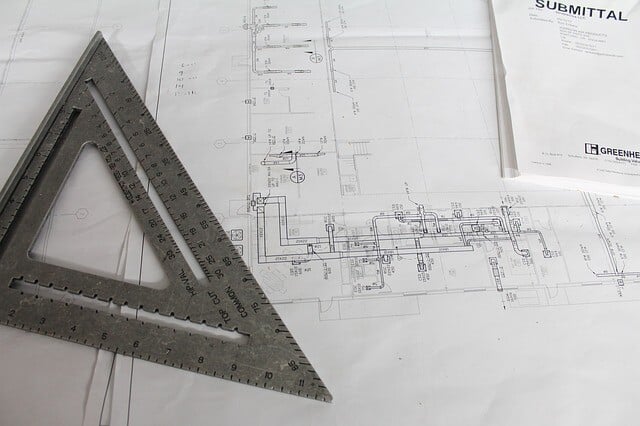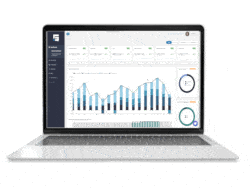Commercial real estate has become increasingly popular in recent years due to its relative stability as an investment and potential tax advantages. One of the biggest tax benefits commercial real estate investments can provide comes through depreciation. Tax depreciation can be a complex topic, but a thorough understanding of how it works is crucial for achieving the most value from your properties. Read on for a complete breakdown of depreciation benefits and how to leverage them for success.
What is Depreciation in Commercial Real Estate?
Most simply, depreciation is a financial measurement of wear and tear on a building. To account for these effects of use, owners can deduct a certain amount each year from their taxes. Commercial properties depreciate for 39 years, with an equal amount deducted each year.
It’s important to note that only buildings and other constructions (like parking lots) can be depreciated. The land itself does not count towards the depreciation amount.
How Does Depreciation Work?
It’s important to understand how depreciation is calculated to know how to use it. Let’s work through an example to see how it works.
Say you purchase a property for $1,000,000. After a property appraisal or tax assessment, you learn the land is worth $300,000. That means the value of the buildings are $700,000. You can divide this by 39 to see that you can deduct $17,948.72 each year.
Strategies to Maximize Tax Depreciation Benefits
After you understand the basics of depreciation, it’s time to learn how depreciation can work for you. There are a variety of regulations, processes, and tools that can help you increase the benefits of depreciation beyond basic yearly deductions.
Cost Segregation Studies
Buildings have a set depreciation period, or “useful life” of 39 years in commercial real estate. However, some parts of your property can depreciate faster. These elements are things that receive the heaviest use or need the most frequent maintenance. While every property will differ, common examples include:
- Parking lots
- Flooring
- Lighting
- HVAC systems
- Security systems
Elements like these depreciate much faster than the building itself, typically over a span of between 5-15 years. During that time, you can deduct these smaller depreciations in addition to the main amount for the property.
In order to know which parts of your property qualify for enhanced depreciation, you must run a cost segregation study. In this process, engineers and tax professionals evaluate your property to determine what you can deduct. Even small adjustments help you save.
Bonus Depreciation
Bonus depreciation is another powerful tool for increasing your benefits. This is an exception that allows you to deduct a larger percentage of your qualified property the year that you buy it, rather than spreading it equally over the depreciation period. In this case, qualified property means assets with a useful life of 20 years or less.
Like cost segregation, bonus depreciation gives you better cash flow early so that you start each property off strong. Cost segregation is also crucial in identifying which assets qualify for bonus depreciation. Common examples include necessary property improvements, maintenance, and furniture.
It’s important to note that bonus depreciation will phase out of use by 2027, unless legislators choose to renew it. Stay informed about law changes and use this tool soon for best results.
Best Practices
Aside from specific procedures, take note of these strategies to make depreciation benefits simpler and more effective.
Get Professional Assistance
Consulting an accountant with experience in commercial real estate taxes is essential. A professional can ensure that you follow complex regulations, advise you on financial decisions about your properties, and most importantly, help you get the highest deductions.
Conduct Cost Segregation Studies Early
Conducting a cost segregation study shortly after you purchase a property lets you take deductions for the longest period of time. Concentrating deductions early gives your business better cash flow at the beginning.
Keep Detailed Records
Meticulously track improvement projects, purchases, and expenses. Having this information on hand streamlines the processes of cost segregation and determining depreciation. It also ensures you don’t forget about any potential benefits, keeping you from missing out on savings. For best results, use a property management software like STRATAFOLIO that stores and organizes all this information for you.
Keep up With Tax Law Changes
It may seem obvious, but ensuring you know the current tax laws ensures that you align with them. You will also be able to make informed choices about how to handle finances.
Risks and Considerations
Depreciation on commercial real estate provides many potential benefits. However, it’s also important to note possible complications so you are fully prepared to make the best business choices. Below are a few major considerations:
Understanding Depreciation Recapture
When you sell a property, the deductions you previously claimed on that property may be subject to recapture. This results in a much higher tax liability.
One strategy to use in this situation is a 1031 exchange. 1031 exchanges let you defer paying capital gains and depreciation recapture by exchanging your commercial property for another of “like-kind.” Like-kind simply means another commercial property with greater or equal value to the first. It is not necessarily the same type of property (e.g. two strip malls).
1031 exchanges usually must occur in a very short period of time. They also include a variety of special rules and circumstances. It’s important to learn these rules and to consult a professional to make the best decisions about using 1031 exchanges in your business.
State Variations to Tax Rules
Not all states handle depreciation the same way. Some regulations may lower your deductions. In addition, handling properties across multiple states with different rules can be confusing. This is another good reason to work with an experienced accountant.
Audits
You may attract audits if you do not properly classify parts of your property for deductions. It’s important to carefully and openly conduct cost segregation studies to ensure that you meet all IRS rules.
Manage Tax Depreciation with STRATAFOLIO
There’s a lot to juggle when it comes to using commercial property depreciation benefits to your advantage. STRATAFOLIO makes things simpler by tracking all your key financial details, including property values, debt, and income. When it’s tax time, everything you need is in one place.
For more information on how STRATAFOLIO can help you maximize tax depreciation benefits for your business, schedule a free demo today.






